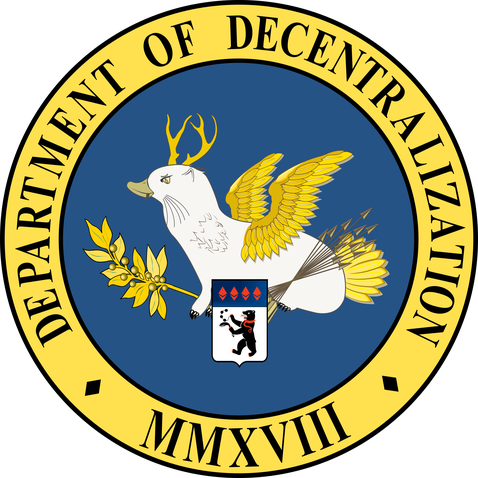- Published on
ETHBerlin: Meet the winners — 50/70-word reviews featuring ECF, ETHPrize, Gitcoin and more
ETHBerlin has come to an end and we are all super pleased with the outcome. We can proudly say that our hackathon has spurned some of the…
- Authors

- Name
- Department of Decentralization
- @dod_berlin
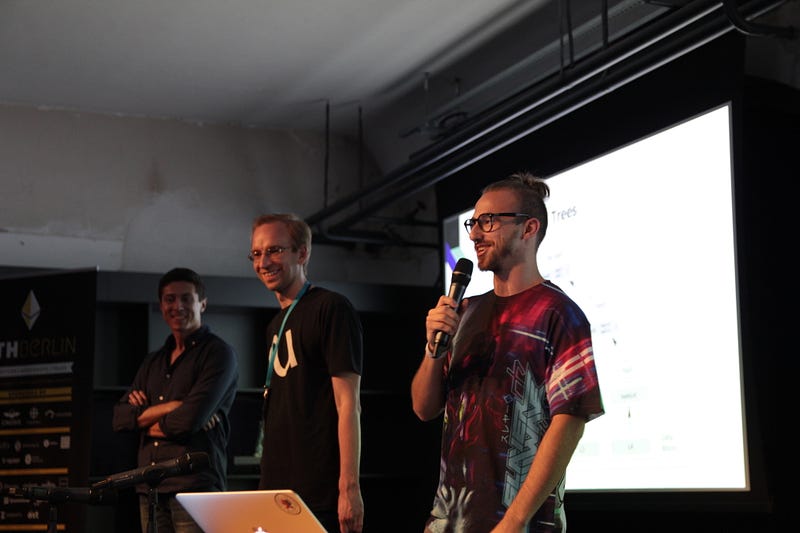
ETHBerlin has come to an end and we are all super pleased with the outcome. We can proudly say that our hackathon has spurned some of the most promising projects in this kind of events to date. To review by ourselves, would have been challenging. Hence, we summoned the experts.
**ECF **came to the rescue — Grant Manager Cassandra Shi and Technical Analyst Hugh Lang took on our challenge “50-word reviews”. Gitcoin’s Scott Moore, one of the most collaborative people ever (as all the Gitcoin team, let’s face it) was the first to help out. Ivo from AdEx, who has been working on the space and was an ETHBerlin sponsor, picked his favorite project as well; while Bryant Eisenbach from SecurETH did his part too. Of course one of our favorite Ethereum 2.0 implementers, Mr. Lane McShardface né Rettig(apparently he is so bullish he changed his name already) of course took on his area of choice; while **Mitch Kosowski from ETHPrize **took care of the rest. We would also like to thank Mitch for his collaboration as a volunteer, judge and Lederhosen master through the event.
Without further ado, meet the winners:
Good Badger (review by Hugh Lang — ECF)
Good Badger is a system for rewarding people with badges for their unique contributions towards UN’s Sustainable Development Goals (SDGs). Each badge is an NFT ERC-721 token awarded to a person (encoded with the details of their contribution) and displayed in their mobile wallet app.
MyENS Wallet (review by Hugh Lang — ECF)
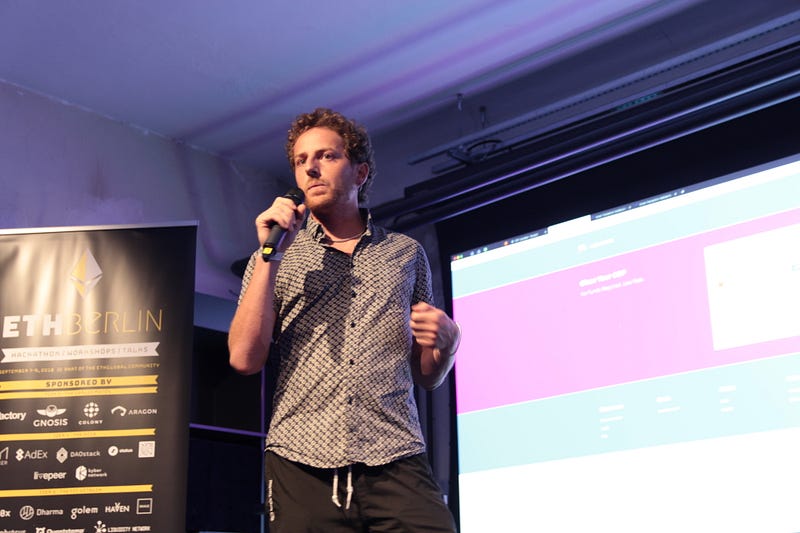 CDP Liquidator CDP Liquidator (review by Hugh Lang — ECF)
CDP Liquidator CDP Liquidator (review by Hugh Lang — ECF)A Collateralized Debt Position (CDP) is an ETH lockup mechanism by which DAI is created. In extreme liquidity scenarios, some users will need a convenient way to exit risky positions. This project is a cool experiment to let a user send their at-risk CDPs to a contract to pay off debts and return remaining collateral to the user.
Sputnik (review by Hugh Lang — ECF)
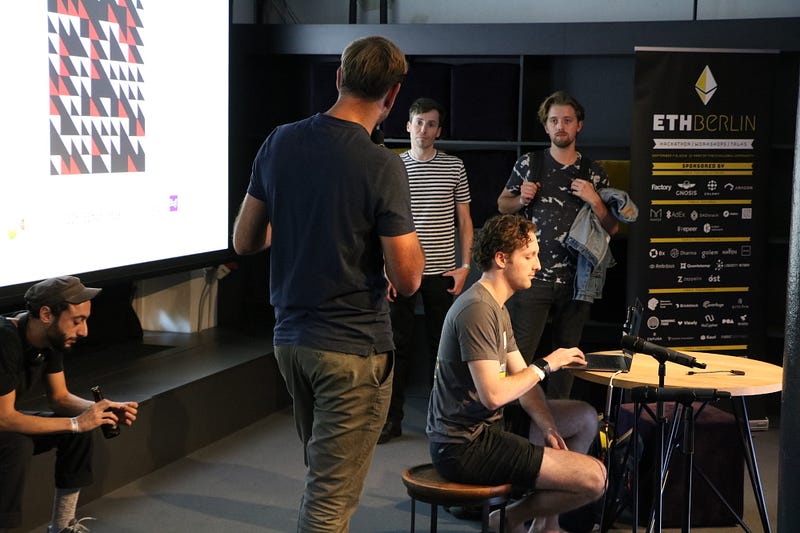 Artonomous Artonomous (review by Mitch Kosowski — ETHPrize)
Artonomous Artonomous (review by Mitch Kosowski — ETHPrize)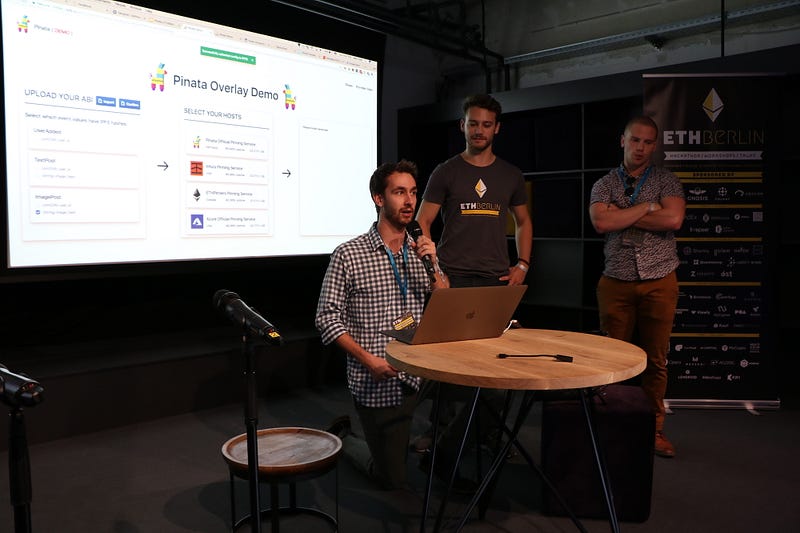 The Piñatas :) Pinata Overlay (review by Mitch Kosowski — ETHPrize)
The Piñatas :) Pinata Overlay (review by Mitch Kosowski — ETHPrize)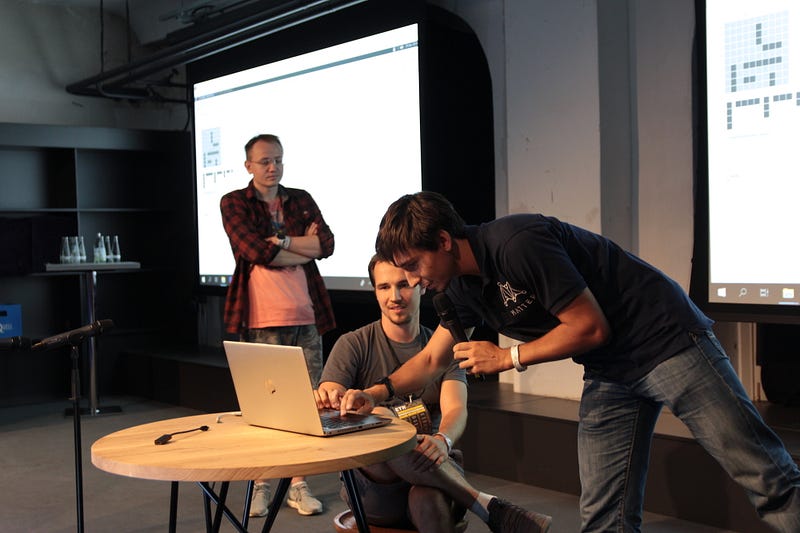 Game of Snarks demo Game of Snarks (Review by Scott Moore — Gitcoin)
Game of Snarks demo Game of Snarks (Review by Scott Moore — Gitcoin)Game of Snarks is a super cool demonstration of zkSNARKs and in fact one of the best applications to help regular users understand their power since the functionality was introduced to Ethereum in Byzantium. In short, Alex Vlasov came up with the idea to implement a game of “Battleship” (where each player has to guess the location of the other player’s ships on their respective grids) and used zkSNARKs to reveal whether a ship has been hit without fully revealing the state of the opposing player’s board. Realizing that it would be hard to manage all of the state of the game on chain, Alex and his team also started work towards a “plasmafied” version of the game where a fraud-proof exists if the Plasma operator doesn’t update the state of the game (whether a battleship has been hit) properly.
Smart Alert (Review by Bryant Eisenbach — SecurETH)
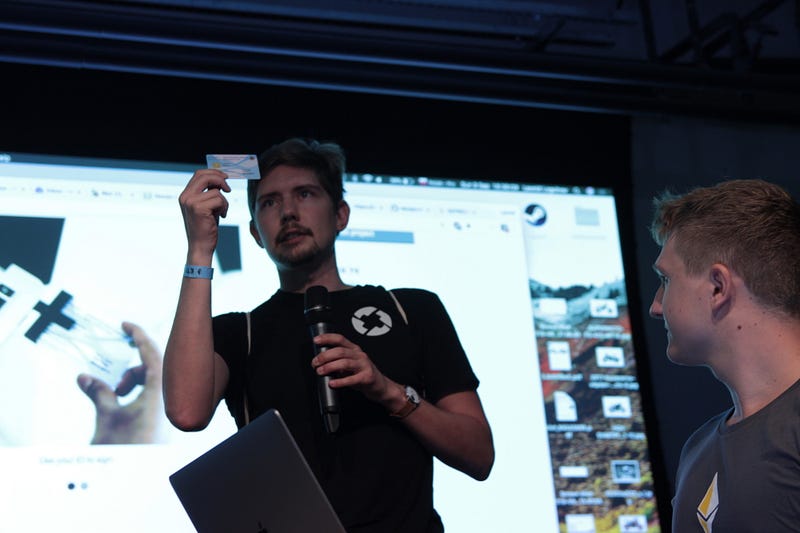 Remco & Leonid really into their Estonia Residence Card ETHstonia Identity (Review by Ivo Georgiev — Adex)
Remco & Leonid really into their Estonia Residence Card ETHstonia Identity (Review by Ivo Georgiev — Adex)A very useful solidity library for verifying signatures made by the Estonian Digital-ID card. By allowing us to identify with our government-issued ID, it has the potential to change how we identify ourselves on the Ethereum network. It’s also an incredibly robust and trustworthy KYC mechanism.
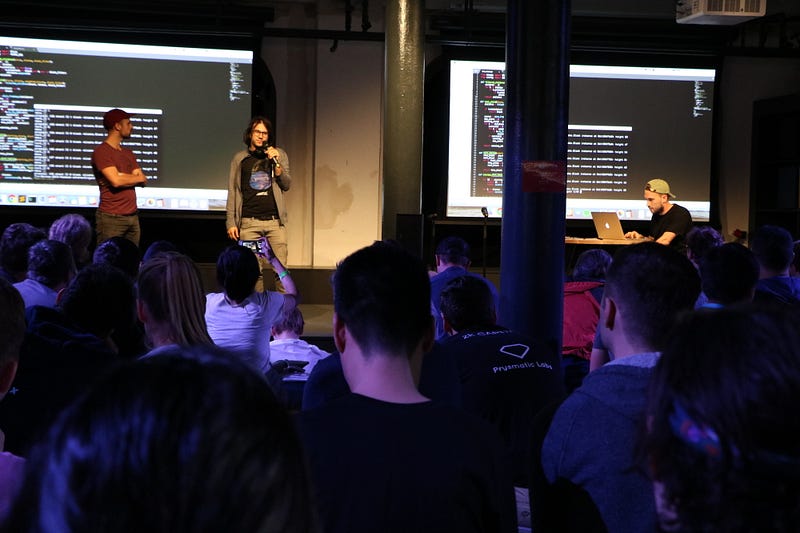 Maurelian, Vlad & Tim demoing the Sharding PoC Sharding PoC (Review by Lane “McShardface” Rettig — Ewasm)
Maurelian, Vlad & Tim demoing the Sharding PoC Sharding PoC (Review by Lane “McShardface” Rettig — Ewasm)While Casper FFG (the “friendly finality gadget,” a.k.a. Vitalik’s casper, which provides finality on top of the existing proof-of-work-based system) is the primary proof of concept candidate in the Shasper “Ethereum 2.0” roadmap, Vlad has been diligently at work for some time on his own Casper workstream, titled Casper CBC (“correct by construction”), which entirely replaces proof of work with a new, provably correct block proposal and fork choice scheme. Until now, that work has been largely theoretical and has consisted primarily of equations and diagrams (see the whitepaper, released last year). So it’s really exciting to see the rubber hit the road and to see some of these ideas be proven out in actual, running code, which is a lot easier for most developers to digest!
Honorary mention (aka the project that got too big):
Görli Testnet (Review by Cassandra Shi — ECF & Lane McShardface)
Görli is a Proof of Authority testnet that can support popular Ethereum clients such as Parity and Geth. Görli bridges the isolation between clients due to using the PoA consensus mechanism. The team managed to have the testnet implemented in Parity and with the Aura PoA consensus work initiated in Geth. You can check it out here.The end of the hackathon is only the beginning of the team’s journey of creating one PoA testnet for all clients: after ETHBerlin the team plans to solidify their current Go implementation of Aura in Geth, launch the first cross client PoA testnet for the Ethereum network and begin work on implementing Clique (Geth’s PoA mechanism) in Parity to allow for two cross-client PoA testnets.
Lane’s note: The current Ethereum testnet landscape is messy (read more on it from project lead Afri here, including more on the Görli project and its motivation). Proof of work doesn’t make much sense for a testnet since the tokens you’re mining have no value, so miners have no real incentive to secure the network, opening it up to attacks. The existing proof of work testnet, Ropsten, has come under attack and has been continually plagued by stability issues. Proof of authority makes more sense but, until now, there has been no way to build a POA testnet including the two major clients, Parity and Geth, since they don’t use the same POA protocol. Görli solves that problem so it’s a very exciting development, but there’s still a lot of work to be done!
The hours before submission were the most nerve-wracking ones. From the start, we were determined that this hackathon would be measured by the projects spurning from it. We were more than pleasantly surprised — the work these hackers did, is simply incredible. We are beyond words and for your hard work and hope you guys managed to get some sleep.
Expect ETHBerlinZwei, because… we did it!!! WE WON! (all of us, the hackers, judges, speakers, volunteers, core team, Factory team, mentors, drag queens, artists, etc.)
